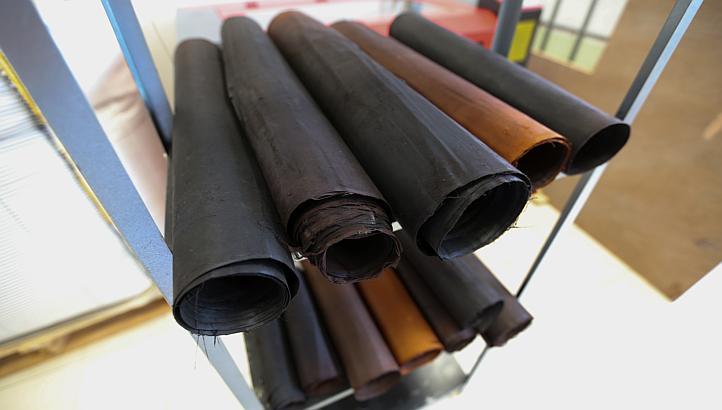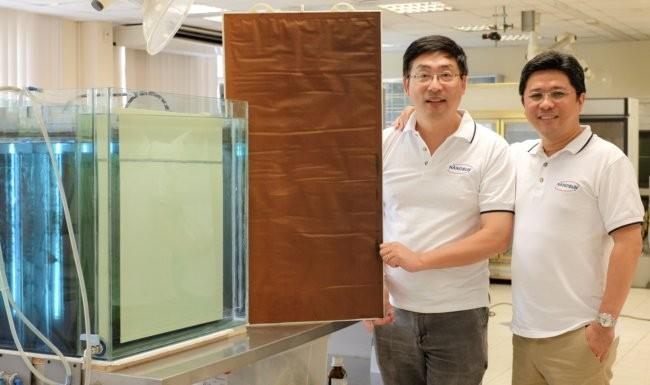 Just a week after announcing their $3 million joint venture with China Commerce Group for International Economic Cooperation – CCIEC – to develop waste water treatment technology, NanoSun is being purchased by investment firm Raffles Capital Group. Raffles is expected to retain current NanoSun directors and shareholders, Dr Darren Sun and Mr Wong Ann Chai while the two continue to develop their water filtration nanotechnology and their joint venture with the CCIEC.
Just a week after announcing their $3 million joint venture with China Commerce Group for International Economic Cooperation – CCIEC – to develop waste water treatment technology, NanoSun is being purchased by investment firm Raffles Capital Group. Raffles is expected to retain current NanoSun directors and shareholders, Dr Darren Sun and Mr Wong Ann Chai while the two continue to develop their water filtration nanotechnology and their joint venture with the CCIEC.
Raffles Capital has officially offered to fully acquire NanoSun and both companies have entered into an implementation deed. The deal is dependant on both companies fully completing due diligence. The purchase will consist of issuing Convertible Notes with a face value of $2 million and convertible to 10 million shares at 20 cents a share. The Notes are expected to mature on December 31st 2017, with interest at 5% per annum.
 Nanyang Technological University Associate Professor Darren Sun and Mr. Wong Ann Chai founded NanoSun about two years ago. NanoSon is a company that was spun-off from Singapore’s Nanyang Technological University, where Sun has been developing and researching his water filtration process since 1997. The China Commerce Group for International Economic Cooperation is a state-owned technology development company that is located in Beijing. The CCIEC works with other businesses to bring agricultural production, food management and chemical treatment technology to the people of China.
Nanyang Technological University Associate Professor Darren Sun and Mr. Wong Ann Chai founded NanoSun about two years ago. NanoSon is a company that was spun-off from Singapore’s Nanyang Technological University, where Sun has been developing and researching his water filtration process since 1997. The China Commerce Group for International Economic Cooperation is a state-owned technology development company that is located in Beijing. The CCIEC works with other businesses to bring agricultural production, food management and chemical treatment technology to the people of China.
The young start-up has developed a 3D printed, flexible titanium dioxide nanofiber membrane that can filter and clean polluted or contaminated waste water. The membranes are self-cleaning, and rather than create large amounts of waste filtered out of the water, they convert the waste material into nitrogen that can be converted into a clean, renewable energy source. The process works by exposing the water and titanium dioxide nanofibers to sunlight or artificial UV rays which causes photocatalytic oxidation. And because the 3D printed filters have a high temperature tolerance any remaining, unconvertible organic pollutants or bacteria can easily be burned off.
NanoSuns joint venture with the CCIEC will use their water-filtering membranes to treat industrial wastewater in the Qingdao National High-Tech Industrial Development Zone. The 20 sq km industrial zone in the Shandong Province will treat an estimated 100 million liters of textile industry wastewater and reclaim it for reuse. The membrane will also be marketed and sold internationally.
“What we will demonstrate at Qingdao will be an affordable but effective technology that can turn polluted and industrial wastewater into a source of clean water, without the generation of secondary waste which other systems have,” explained NanoSun co-founder Professor Darren Sun.
As Chinese industry is subject to increasing pressure to clean up its waste material and reduce water contamination, water filtration technology is becoming an important new industry in China. The 3.1 million dollar joint venture between NanoSun and CCIEC is expected to last for three years. There has been no date set for the completion of the acquisition of NanoSun by Raffles Capital.
Have you heard of titanium dioxide nanofibers being used to treat waste water? Tell us about it over on the NanoSun forum on 3DPB.com.
Subscribe to Our Email Newsletter
Stay up-to-date on all the latest news from the 3D printing industry and receive information and offers from third party vendors.
You May Also Like
Precision at the Microscale: UK Researchers Advance Medical Devices with BMF’s 3D Printing Tech
University of Nottingham researchers are using Boston Micro Fabrication‘s (BMF) 3D printing technology to develop medical devices that improve compatibility with human tissue. Funded by a UK grant, this project...
3D Printing Webinar and Event Roundup: April 21, 2024
It’s another busy week of webinars and events, starting with Hannover Messe in Germany and continuing with Metalcasting Congress, Chinaplas, TechBlick’s Innovation Festival, and more. Stratasys continues its advanced training...
3D Printing Webinar and Event Roundup: March 17, 2024
It’s another busy week of webinars and events, including SALMED 2024 and AM Forum in Berlin. Stratasys continues its in-person training and is offering two webinars, ASTM is holding a...
3D Printed Micro Antenna is 15% Smaller and 6X Lighter
Horizon Microtechnologies has achieved success in creating a high-frequency D-Band horn antenna through micro 3D printing. However, this achievement did not rely solely on 3D printing; it involved a combination...































